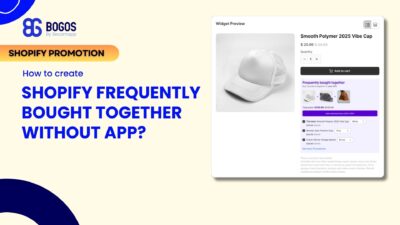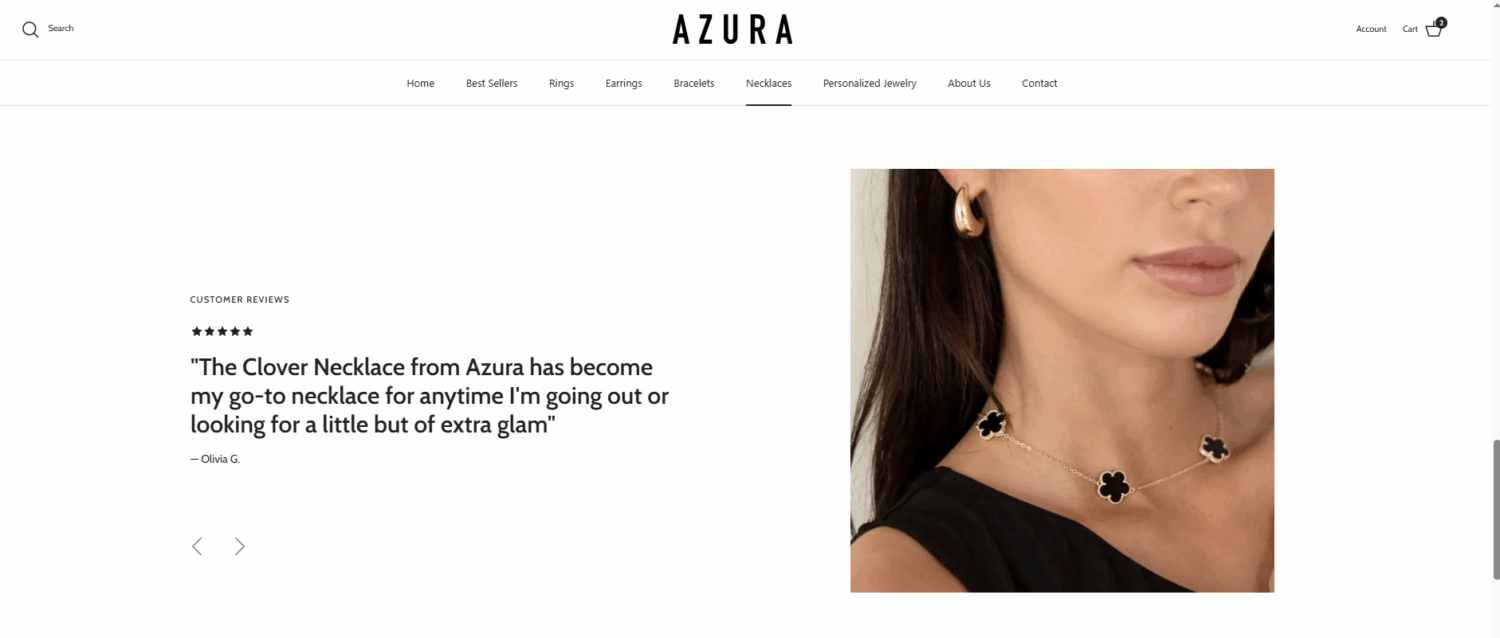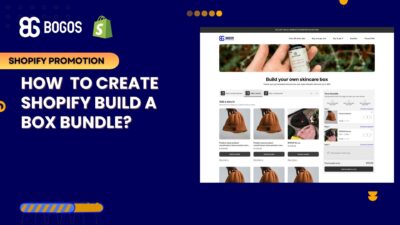
How to Add Shopify Frequently Bought Together? (Without App – Code Free)
Shopify frequently bought together recommendations can boost your average order value by 10-30% by showing customers complementary products they’re...

Digital Marketing Specialist
The “Add to Cart” click is a good start, but high cart abandonment rates-70-80%-prove the completed purchase is the true victory for Shopify owners. The gap between a full cart and a final order is often about psychology, not product or price. Applying the tried-and-true principles of persuasion means you can lead shoppers through their natural emotional hurdles. Well-placed psychological nudges ease customers from indecision toward purchase, unleashing your store’s hidden conversion potential.
Probably the most powerful psychological trigger in e-commerce, FOMO takes advantage of the basic human tendency to value things more if they are perceived as limited or about to disappear. For Shopify merchants, strategically introducing urgency and scarcity can provide the crucial final nudge your shoppers need to complete their purchase now, rather than later. The key is to make these elements genuine and transparent to maintain customer trust.

Scarcity Messaging: On a product page, use explicit and timely stock indicators. Use micro-copy instead of just “In Stock,” like “Only 5 left!” or “Low Stock – Selling Fast,” especially for high-demand products. A low inventory count in the cart or on the checkout page reinforces the need for action before it’s gone.
“Limited Edition” and Exclusivity: Offering “Limited Edition” runs or an “Exclusive” bundle available only for a limited period increases the perceived value of that product. Use Shopify’s native features or an app to clearly tag these items. Exclusivity taps into the human desire for status and unique ownership.
One-Time Offers in Cart: A small pop-up or banner with an offer for a one-time, exclusive add-on or discount that will expire in the next 15 minutes, right before a customer leaves the cart page can work well as a final prompt. The ticking clock creates urgency specific to their current session, pushing them to move to make the payment now and get the deal.
Countdown Timers for Sales: Use a prominent countdown timer on a special promotion or sale that affects the items in their cart. Example: “Free Shipping on all orders ends in 02:15:30!” The deadline must be real; consistency builds credibility.
Shipping Cut-Offs: Display a clear message like, “Order within the next 3 hours and 30 minutes to receive your order by Friday.” This links urgency to a tangible, desirable outcome (fast delivery) and is especially effective right before a weekend or holiday. Shopify’s shipping settings and apps can help automate this precise, real-time messaging.
Limited-Time Coupon Codes: Offer a time-restricted discount code instead of just any, possibly through an exit-intent pop-up, with a very limited time for expiration, say 24 hours or so. This provides a financial incentive paired with a deadline, maximizing conversion rates for hesitant buyers.
Ethical Application: Any perceived scarcity or urgency on your part needs to be genuine. Bogus countdowns or inventory counts will chip away at trust, which is the building block of a thriving, long-term e-commerce enterprise.
In the virtual world of e-commerce, shoppers aren’t able to inspect your products, so there’s a high degree of anxiety over making a purchase. The principle of Social Proof-the psychological phenomenon whereby people follow actions of others, assuming that those actions are indicative of the right behavior-can help alleviate this. By showing evidence that other people trust and value your brand, you effectively reduce the perceived risk for new customers. More importantly, this can be crucial on the path to checkout, where one final bout of doubt may lead to abandonment.

Authentic Customer Reviews and Ratings: Showcase your average star rating front and center along with recent high-quality reviews on product pages, even subtly on the cart or checkout summary page. Positive testimonials act like third-party endorsements that are way more credible than your own marketing copy. Shopify review apps make aggregating and showcasing photo and video reviews easier, adding a layer of authenticity.
“As Seen On” and Media Mentions: In cases where your brand has been featured in publications that carry authority, publish these logos (“As Seen On.”) near your trust badges or product imagery. This appeals to the principle of Authority, implying experts or authoritative media outlets validate the quality of your brand.
Real-Time Purchase Pop-ups: Small, unobtrusive pop-ups that say, “Laura from New York just bought the ‘Aura’ Candle” use herd behavior. They give the impression of a busy, popular store and confirm the purchase decision for the current shopper.
Showcase Customer Count: A simple line of copy like “Join the 10,000+ happy customers who love this product!” or showing the number of units sold adds this powerful layer of social validation to your best-sellers.
Visible Trust Badges: Security seals by known providers, such as SSL Secure, Visa/Mastercard logos, or Shopify’s own secure checkout badge, should be shown on the checkout page where customers are entering sensitive payment information. These simple visual indicators assure the customer their transaction is secure.
Clear, Generous Policies: Anxiety often stems from uncertainty about returns. A prominent link or brief line of text on the checkout page reminding the customer of your “30-Day Money-Back Guarantee” or “Free Returns and Exchanges” dramatically lowers the commitment hurdle. It makes the purchase feel less final and risk-laden.
Diverse Payment Options: Including as many payment methods as possible, from digital wallets like Shop Pay, Apple Pay, and Google Pay to more traditional credit cards, adds not only convenience but also trust via the authority of these familiar, secure third-party services.
Psychologically, humans are wired to take the path of least resistance. Every extra click, every form field not truly needed, and each and every point of confusion is a bit of friction that raises the probability of cart abandonment. The checkout process is the most sensitive stage in the e-commerce journey, and your Shopify store must be optimized for speed, clarity, and simplicity to respect the shopper’s commitment and see the transaction through.

Guest Checkout by Default: Never force a new customer to create an account before they can purchase. Prominently offer the possibility of Guest Checkout. You can then invite them to create an account after the purchase is complete, using the principle of Commitment and Consistency: they’ve committed to the purchase already, so a small extra step is less of a barrier.
Minimize Form Fields: Only ask for information that is absolutely necessary. For instance, do not ask for a separate shipping and billing address if they are the same; use a pre-checked box. Using express checkout options such as Shop Pay significantly reduces friction by auto-filling fields, allowing returning customers to complete their purchase with one click.
Progress Indicators: A visual progress bar at the top of the checkout-for instance, “1. Cart > 2. Information > 3. Shipping > 4. Payment”-sets expectations clearly and provides a feeling of control and forward momentum that will satiate the brain’s craving for completion.
Price Transparency Upfront: Hidden fees are the number one conversion killer. Present the complete price, including any and all taxes and shipping charges, as far up in the process as the cart page. Use a progress bar or clear messaging, like “Add just $5.00 more to qualify for Free Shipping!”, to encourage a last and transparent addition to the cart, leveraging the Zero Price Effect.
Remove Distractions: The final payment page should be a clean, minimal, and focused environment. Remove any unnecessary navigation menus, sidebars, and distracting links from the customer’s line of sight that could pull them away from the ultimate goal of completing the purchase.
High-Impact CTA: The final payment button should have clear, action-oriented language, such as “Pay Now” or “Complete Purchase.” Make it a contrasting color for maximum visibility and take advantage of how the brain is wired to follow a clear direction.
Mobile-First Optimization: Since most e-commerce traffic is mobile, your Shopify checkout needs to be faultlessly responsive. Buttons should be large enough that they can easily be tapped, and payment fields auto-format for the best mobile experience. Shop Pay is particularly optimized for mobile conversion.
For every Shopify entrepreneur, the psychology of persuasion is not manipulation but empathy-driven design. By understanding the shopper’s anxieties-risk, effort, and opportunity loss-and desires for exclusivity, social validation, and simplicity, you will be able to create a seamless, trusted checkout experience.
Every element acts as a calculated psychological nudge-from applying scarcity and leveraging social proof through genuine reviews, down to ensuring that the final payment is friction-free with features like Shop Pay. When you align your platform with the inherent decision-making patterns of the human mind, you transform your store into a high-converting machine. Confidence and clarity will pave the road from “browser” to “buyer,” turning more added-to-cart items into profitable completed orders.
The single biggest reason is usually unexpected costs, mainly shipping fees, which connects with the psychological principle of Loss Aversion. Shoppers feel the pain of losing money more than the joy of gaining a product. Being transparent about all costs upfront-or better yet, offering free shipping with a clear threshold-is the most effective psychological fix.
Reciprocity is the desire to return a favor. You can use this by giving first: offer a genuinely valuable freebie – for example, a detailed guide, a free sample, or a significant welcome discount, or a complimentary gift wrap – before or with the purchase. This little bit of giving places the customer into a subconscious state of obligation to make the purchase.
Guest Checkout is almost always better for initial conversions. Forcing account creation introduces huge friction and goes against the Principle of Least Effort. Use Shop Pay or an express checkout option to allow the benefits of saved info (speed) without the burden of required sign-up to increase the likelihood of a purchase happening immediately.
Focus on showcasing non-review forms of social proof:
Authority/ Expert: Highlight your brand’s unique story or any media mentions, however small.
Action: Show a banner indicating, “15 people are currently viewing this product” or “New on Shopify – Over 100 sold this month!”
Trust Badges: Display security seals (SSL, secure payment logos) on prominent display to borrow the authority and trust of those well-known brands.
This depends on the price of your product, known as the Rule of 100. If your product price is under $100, a percentage discount-e.g., 20% off-feels like a bigger saving. If your product price is over $100, a dollar-off discount-e.g., $50 off-is usually perceived as a more significant and tangible saving. Use the format that maximizes the shopper’s perceived value.


Shopify frequently bought together recommendations can boost your average order value by 10-30% by showing customers complementary products they’re...

Is your Shopify store making the most of product add-ons? Upselling add-ons is one of the most effective strategies...

Shopify Build a Box feature has become one of the most exciting ways to sell online. Instead of pushing...
